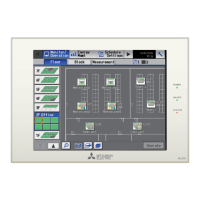Contents
1. Safety precautions ..............................................................5
2. Introduction .........................................................................7
3. Parts to be used ................................................................13
4. Preparation .......................................................................15
5. Settings on the LCD ..........................................................31
6. Settings using Initial Setting Tool ......................................90
7. Settings using Web Browser for Initial Settings ..............136
8. Maintenance ...................................................................183
9. Troubleshooting ..............................................................188
10. Advance preparation .......................................................194
11. Explanation of terms .......................................................205
Appendix 1: Air-conditioner ON/OFF trial run .......................210
Appendix 2: Added functions ................................................214
Air Conditioning Control System
Centralized Controller
AE-200A/AE-50A/EW-50A
AE-200E/AE-50E/EW-50E
Before using the controller, please read this Instruction Book carefully to ensure proper operation.
Retain this manual for future reference.
WT07627X03
Instruction Book
–Initial Settings–
<ORIGINAL>


